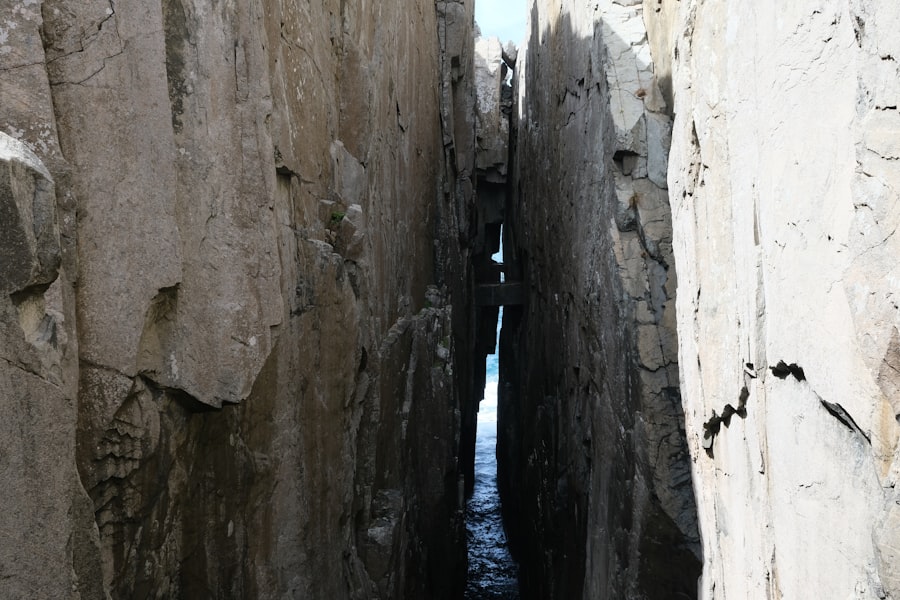The Drake Passage, a body of water that separates South America from Antarctica, is renowned for its tumultuous seas and unpredictable weather. Named after the English explorer Sir Francis Drake, who navigated these waters in the late 16th century, the passage has become a significant route for maritime travel, particularly for those venturing to the Antarctic region. Its strategic importance is underscored by its role as a conduit for ocean currents and its unique ecological significance, making it a focal point for researchers and adventurers alike.
Navigating the Drake Passage is often considered a rite of passage for many travelers seeking to explore the wonders of Antarctica. However, the journey is not without its challenges. The passage is infamous for its rough seas, which can turn a seemingly calm voyage into a harrowing experience.
Understanding the complexities of this waterway is essential for anyone planning to traverse it, as the Drake Passage offers both breathtaking beauty and formidable obstacles.
Key Takeaways
- The Drake Passage is a body of water between South America’s Cape Horn and the South Shetland Islands of Antarctica, known for its challenging sailing conditions.
- The geography and weather patterns of the Drake Passage are influenced by the Antarctic Circumpolar Current and the strong westerly winds, resulting in unpredictable and often rough seas.
- Rough conditions in the Drake Passage are frequent, with reports of high winds, large waves, and stormy weather making navigation difficult for ships.
- Factors contributing to rough seas in the Drake Passage include the convergence of the Atlantic, Pacific, and Southern oceans, as well as the lack of landmass to break up the wind and waves.
- Navigating the Drake Passage during rough conditions requires careful planning, including choosing the right vessel, timing the journey to avoid the worst weather, and being prepared for potential discomfort.
Understanding the geography and weather patterns of the Drake Passage
The geography of the Drake Passage is characterized by its narrow width, measuring approximately 800 kilometers (500 miles) at its widest point. This constricted space funnels ocean currents, creating a dynamic environment where the Atlantic and Pacific Oceans converge. The passage is flanked by the rugged coastlines of Cape Horn to the south and the Antarctic Peninsula to the north, contributing to its dramatic scenery and challenging navigation.
Weather patterns in the Drake Passage are notoriously volatile. The region experiences a mix of climatic influences, including polar air masses from Antarctica and warmer air from the north. This clash of temperatures often results in rapidly changing weather conditions, with storms developing with little warning.
Travelers must be prepared for everything from bright sunshine to fierce winds and heavy precipitation, all within a single day. The unpredictable nature of the weather adds an element of excitement but also necessitates careful planning and awareness.
Frequency of rough conditions in the Drake Passage

Rough conditions in the Drake Passage are not merely occasional; they are a frequent occurrence that travelers must anticipate. Statistics indicate that approximately 50% of voyages through the passage experience significant turbulence, with waves reaching heights of up to 30 feet during storms. This frequency of rough seas is attributed to the unique geographical features of the passage, which can amplify wind speeds and wave heights.
The time of year also plays a crucial role in determining sea conditions. The austral summer months, from November to March, are generally considered the best time for crossing due to milder weather. However, even during this period, travelers should remain vigilant, as sudden storms can arise unexpectedly.
The winter months bring harsher conditions, with increased likelihood of severe weather events that can make navigation particularly treacherous.
Factors that contribute to rough seas in the Drake Passage
| Factor | Description |
|---|---|
| Wind | Strong westerly winds can create large waves and rough seas in the Drake Passage. |
| Currents | The interaction of the Antarctic Circumpolar Current and the South American continent can lead to turbulent waters. |
| Shoaling | The shallowing of the seafloor as it approaches the South American continent can cause waves to increase in height and become more chaotic. |
| Icebergs | The presence of icebergs in the area can pose a hazard to navigation and contribute to rough seas. |
Several factors contribute to the notorious rough seas experienced in the Drake Passage. One primary factor is the strong westerly winds that sweep across the Southern Ocean. These winds can create large swells that build up over vast distances, resulting in formidable waves as they approach the narrow confines of the passage.
The combination of wind and current can lead to chaotic sea conditions that challenge even experienced mariners. Another significant factor is the underwater topography of the passage. The presence of submerged ridges and varying depths can disrupt wave patterns, causing them to become steep and unpredictable.
Additionally, the convergence of different ocean currents—such as the Antarctic Circumpolar Current—further complicates navigation by creating turbulent waters. These elements combine to make the Drake Passage one of the most challenging maritime routes in the world.
Tips for navigating the Drake Passage during rough conditions
For those determined to navigate the Drake Passage despite its reputation for rough conditions, preparation is key. One essential tip is to choose a vessel designed for such challenging waters. Modern expedition ships are equipped with stabilizers and reinforced hulls that enhance safety and comfort during turbulent crossings.
Travelers should also consider booking their journey with reputable operators who have extensive experience navigating these waters. Another important aspect is to remain flexible with travel plans. Given the unpredictable nature of weather in the Drake Passage, it is wise to allow for potential delays or changes in itinerary.
Staying informed about current weather forecasts and being prepared for sudden shifts can make a significant difference in ensuring a safe and enjoyable journey. Additionally, travelers should pack appropriate clothing and gear to stay warm and dry during rough conditions.
Safety measures for rough seas in the Drake Passage

Safety should always be a top priority when navigating the Drake Passage, especially during rough seas. One critical measure is to ensure that all safety equipment on board is in good working order. This includes life jackets, lifeboats, and emergency communication devices.
Crew members should conduct safety drills before departure to familiarize passengers with emergency procedures.
Crew members should provide regular updates on weather conditions and any necessary precautions that travelers should take.
Passengers should also be encouraged to voice any concerns or questions they may have regarding safety protocols. By fostering an environment of transparency and preparedness, everyone on board can feel more secure during their journey through these challenging waters.
How to prepare for the possibility of rough conditions in the Drake Passage
Preparation for potential rough conditions in the Drake Passage extends beyond safety measures; it also involves mental readiness. Travelers should approach their journey with an understanding that rough seas are a possibility and that adaptability is crucial. This mindset can help mitigate anxiety and enhance overall enjoyment of the experience.
Packing wisely is another essential aspect of preparation. Travelers should bring layers of clothing suitable for varying temperatures and conditions, including waterproof outerwear and sturdy footwear. Additionally, motion sickness remedies—whether over-the-counter medications or natural alternatives—should be included in one’s travel kit.
Being well-prepared can make all the difference when facing the unpredictable nature of the Drake Passage.
Alternatives to navigating the Drake Passage during rough weather
For those who may be hesitant about navigating the Drake Passage during rough weather, there are alternatives worth considering. Some travelers opt for air travel to reach their Antarctic destinations directly, bypassing the passage altogether. Flights from Ushuaia, Argentina, to various points in Antarctica offer a quicker and often more comfortable option for those looking to avoid turbulent seas.
Another alternative is to plan trips during times when weather patterns are more favorable. By choosing to travel during peak seasons or monitoring long-range forecasts, travelers can increase their chances of encountering calmer conditions while crossing the Drake Passage. Additionally, some cruise lines offer itineraries that include alternative routes or ports of call that may provide smoother sailing experiences.
The experience of navigating the Drake Passage in rough conditions
Despite its challenges, navigating the Drake Passage in rough conditions can also be an exhilarating experience for many travelers. The sheer power of nature on display—massive waves crashing against the hull and winds howling through rigging—can evoke a sense of awe and respect for the ocean’s might. For some adventurers, this raw encounter with nature becomes a highlight of their journey.
Moreover, experiencing rough seas often fosters camaraderie among passengers and crew alike. Shared moments of uncertainty can lead to lasting bonds as individuals support one another through challenging times at sea. The stories exchanged during these moments often become cherished memories that travelers carry with them long after their voyage has ended.
Testimonials from travelers who have experienced rough seas in the Drake Passage
Many travelers have shared their experiences navigating the Drake Passage under challenging conditions, offering insights into both the trials and triumphs encountered along the way. One traveler recounted how their ship was tossed about by towering waves, yet they found solace in watching fellow passengers rally together, sharing laughter and stories amidst their shared discomfort. Another traveler described their crossing as a transformative experience, stating that while they had initially feared rough seas, they ultimately found beauty in nature’s unpredictability.
They noted how witnessing dolphins riding alongside their ship during turbulent waters provided a sense of wonder that overshadowed any discomfort they felt from seasickness. Such testimonials highlight how navigating rough conditions can lead to personal growth and unforgettable memories.
Conclusion and final thoughts on navigating the Drake Passage
In conclusion, navigating the Drake Passage presents both challenges and rewards for those willing to embark on this adventurous journey. While its reputation for rough seas may deter some travelers, understanding its geography, weather patterns, and safety measures can empower individuals to face these challenges head-on. Preparation is key—both mentally and physically—as travelers equip themselves with knowledge and resources to navigate this formidable waterway.
Ultimately, crossing the Drake Passage offers an unparalleled opportunity to connect with nature’s raw power while exploring one of Earth’s most remote regions. For many adventurers, it becomes more than just a crossing; it transforms into a memorable chapter in their travel narratives—one filled with stories of resilience, camaraderie, and awe-inspiring encounters with nature’s grandeur.
The Drake Passage, known for its notoriously rough seas, is a topic of interest for many adventurers and researchers alike. This body of water, located between the southern tip of South America and Antarctica, is infamous for its unpredictable weather and turbulent conditions. For those curious about the frequency and nature of these rough seas, an insightful article on the subject can be found on MyGeoQuest. This article delves into the factors contributing to the Drake Passage’s reputation and offers a deeper understanding of what travelers might expect when navigating these waters. For more detailed information, you can read the related article on the MyGeoQuest website by following this link.
WATCH NOW! Drake Passage: Earth’s Deadliest Waters Revealed
FAQs
What is the Drake Passage?
The Drake Passage is the body of water between the southern tip of South America and the northern tip of the Antarctic Peninsula. It is known for its notoriously rough seas and challenging sailing conditions.
How often is the Drake Passage rough?
The Drake Passage is known for its rough and unpredictable seas. It is often rough due to the convergence of the Atlantic, Pacific, and Southern oceans, as well as the strong westerly winds that circle the Antarctic.
Are there specific times of the year when the Drake Passage is rougher?
The Drake Passage can be rough at any time of the year, but it is generally considered to be roughest during the austral winter (June to August) when storms and high winds are more frequent.
What are the factors that contribute to the roughness of the Drake Passage?
The roughness of the Drake Passage is primarily due to the convergence of the ocean currents, the strong westerly winds, and the lack of any significant landmass to break up the waves. These factors combine to create challenging sailing conditions.
Are there ways to mitigate the roughness of the Drake Passage?
While the roughness of the Drake Passage cannot be completely eliminated, choosing the right time of year to travel, selecting a sturdy and well-equipped vessel, and taking appropriate precautions can help mitigate the impact of rough seas.
